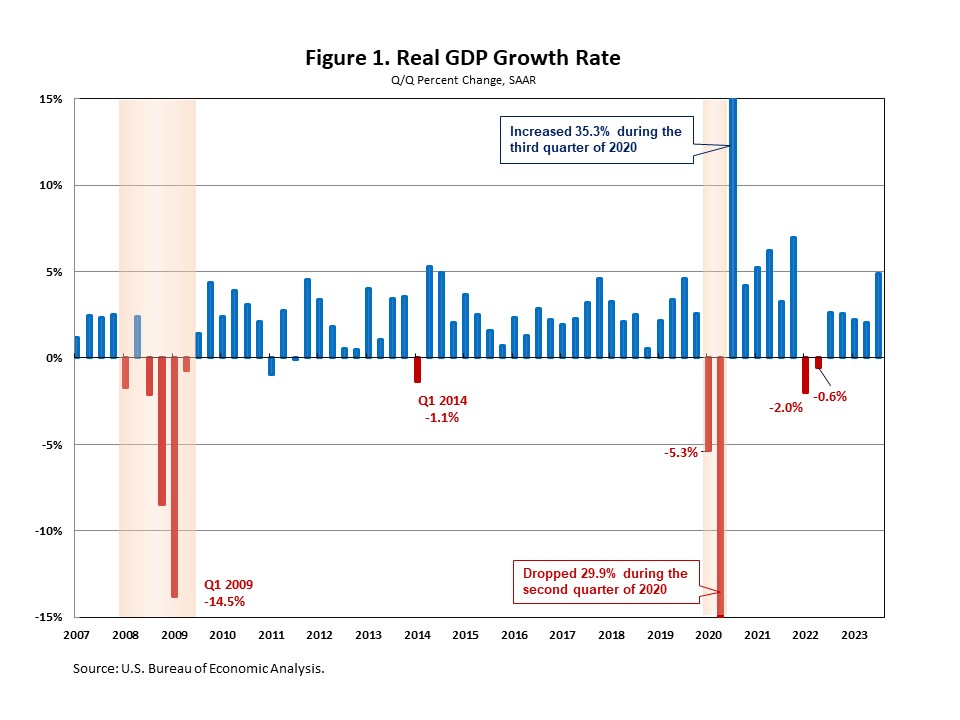The U.S. economy had remarkable growth in the third quarter of 2023, fueled by consumer spending.
The GDP price index rose 3.5% for the third quarter, up from a 1.7% increase in the second quarter. The Personal Consumption Expenditures (PCE) Price Index, capturing inflation (or deflation) across a wide range of consumer expenses and reflecting changes in consumer behavior, rose 2.9% in the third quarter, up from a 2.5% increase in the second quarter.
According to the “advance” estimate released by the Bureau of Economic Analysis (BEA), real gross domestic product (GDP) increased at an annual rate of 4.9% in the third quarter of 2023, following a 2.1% gain in the second quarter. It is the biggest jump since the fourth quarter of 2021 and the fifth consecutive quarterly increase in GDP. This quarter’s growth was close to NAHB’s forecast of a 5.0% increase.

This quarter’s increase in real GDP reflected increases in consumer spending, private inventory investment, exports, government spending, and residential fixed investment, partially offset by a decrease in nonresidential fixed investment. Imports, which are a subtraction in the calculation of GDP, increased.
Consumer spending rose at an annual rate of 4.0% in the third quarter, reflecting increases in both services and goods. While expenditures on services increased 3.6% at an annual rate, goods spending increased 4.8% at an annual rate, led by recreational goods and vehicles (+15.8%).
Meanwhile, the increase in private inventory investment reflected increases in manufacturing and retail trade.

Nonresidential fixed investment decreased 0.1% in the third quarter, following a 7.4% increase in the second quarter. A decrease in equipment (-3.8%) was partly offset by increases in intellectual property products (2.6%) and structures (1.6%). Additionally, residential fixed investment (RFI) rose 3.9% in the third quarter. This was the first gain after nine consecutive quarters for which RFI subtracted from the headline growth rate for overall GDP. Within residential fixed investment, single-family structures rose 21.6% at an annual rate, multifamily structures rose 4.5% and improvements decreased 1.7%.

Related


